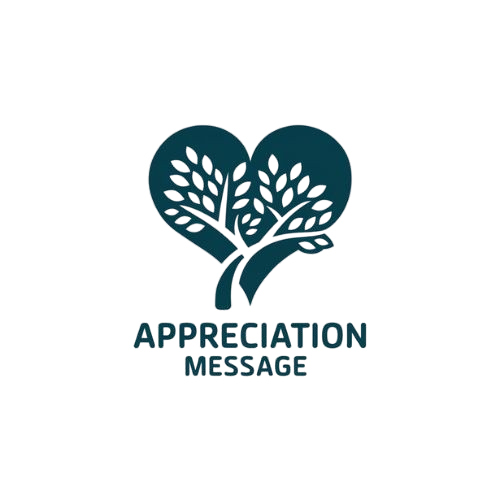A point of contact is the main person who helps with questions, requests, or issues. They make communication easier and ensure the right information reaches the right people. Whether in business, customer service, or projects, having a clear point of contact saves time and reduces confusion.There are many point of contact synonyms, such as coordinator, representative, or liaison. A main point of contact synonym could be key contact or lead representative. A first point of contact synonym includes initial responder or front-line support.
Knowing the right synonym for point of contact helps improve communication in professional settings. Common point of contact examples include customer service agents, project managers, and company representatives. A strong point of contact ensures smooth teamwork and better customer relationships. Whether in small businesses or large companies, having a clear point of contact is important for success.
What Does “Point of Contact” Mean?
A point of contact is the person or team responsible for communication. They handle questions, share information, and guide people in the right direction. For example, in a company, a customer service agent is often the first point of contact for clients needing help.
Having A point of contact makes communication easier. Instead of speaking to many people, you know exactly who to reach. This saves time and prevents confusion. In business, a manager or team leader is usually theA point of contact for project updates or important discussions.
Other synonyms for point of contact include representative, coordinator, or liaison. These words describe someone who connects people or helps solve problems. For example, in a hospital, a nurse may be the first point of contact for a patient before seeing a doctor.
Is It Professional/Polite to Say “Point of Contact”?
Yes, “point of contact” is a professional and polite phrase. It is commonly used in business, customer service, and official emails. Saying “main point of contact” makes it clear who is responsible for communication. It helps people know who to talk to for help or information.
Using A point of contact is better than saying “person in charge” because it sounds more formal. It is a respectful way to refer to someone without making it seem like they have authority over others. For example, in an office, a receptionist is often the firstA point of contact for visitors.
There are many synonyms for point of contact, such as representative, liaison, or contact person. These terms sound professional and polite. No matter the situation, choosing the right point of contact ensures smooth communication. It also shows respect and makes interactions more efficient.
Advantages or Disadvantages of Saying “Point of Contact”?

Using A point of contact has many advantages. It makes communication clear and professional. People know exactly who to reach for help. However, a disadvantage is that it may sound too formal in casual settings. In friendly conversations, saying “main contact person” or “first point of contact” might feel more natural.
Advantages
- Clarity – It clearly defines who is responsible for communication.
- Professionalism – The term sounds formal and polished in business settings.
- Efficiency – It helps people know exactly who to reach out to, avoiding confusion.
- Universal Understanding – Most industries recognize and use this term, making it widely understood.
- Improves Customer Experience – Having a main point of contact makes it easier for clients to get help.
Disadvantages
- Sounds Impersonal – It may come off as too corporate instead of warm and approachable.
- Lack of Specificity – It doesn’t always clarify the exact role or responsibilities of the person.
- Overused in Business Jargon – Some people find it cliché or robotic.
- Can Be Confusing in Large Teams – If multiple contacts exist, it might not be clear who to reach out to first.
- Not Always Customer-Friendly – Casual clients may prefer simpler terms like “contact person” or “representative.”
Point of Contact Synonyms:
- Main Contact Person – The key individual responsible for handling communication and inquiries in a professional or business setting, ensuring smooth coordination and support for clients, customers, or team members.
- Primary Contact – The first and most important individual people reach out to for information, support, or assistance in any organization, business, or customer service situation.
- First Point of Contact – The initial person someone speaks to when seeking information, help, or guidance in a company, project, or service-based organization.
- Main Representative – The official person who interacts with customers, clients, or partners, ensuring they receive the necessary assistance, updates, or solutions for their inquiries or concerns.
- Official Contact Person – The designated individual responsible for handling professional communication, addressing questions, resolving issues, and providing relevant details within a company or business.
- Lead Contact – The primary person assigned to facilitate communication between departments, clients, or external parties, ensuring smooth interactions and problem-solving.
- Primary Representative – The official person in charge of responding to inquiries, offering solutions, and maintaining strong relationships between different teams or clients.
- Go-To Person – The trusted individual who provides information, assistance, or solutions whenever someone needs guidance in a particular field or business situation.
- Key Contact Person – The essential individual responsible for managing communication, directing inquiries, and ensuring customer or client needs are met effectively.
- Main Communication Link – The bridge between teams, businesses, or clients, ensuring smooth information exchange and efficient handling of requests.
- Official Liaison – The assigned representative who acts as a mediator between two parties, ensuring clear and professional communication.
- Customer Support Representative – The individual responsible for answering customer queries, solving issues, and ensuring a seamless service experience.
- Company Spokesperson – The official representative who communicates on behalf of a company, providing updates, information, and necessary guidance.
- Dedicated Contact – The assigned person for managing specific communications, ensuring clarity, efficiency, and quick responses.
- Primary Coordinator – The person responsible for organizing tasks, handling inquiries, and ensuring smooth operations within an organization or project.
- First Responder in Communication – The individual who immediately addresses concerns, answers questions, and ensures smooth information flow in a business or customer service setting.
- Designated Contact Person – The officially assigned individual handling communications, managing inquiries, and providing relevant information in an organized manner.
- Help Desk Representative – The support agent who assists with customer concerns, solving technical or service-related issues in a professional way.
- Client Support Specialist – The trained individual who helps clients navigate services, products, or processes, ensuring satisfaction and problem resolution.
- Customer Relations Officer – The professional responsible for maintaining strong relationships with customers, addressing concerns, and enhancing overall client experience.
- Service Desk Operator – The individual handling service-related inquiries, ensuring customers or employees receive the necessary assistance efficiently.
- Business Contact – The professional link between a company and its clients, partners, or customers for official discussions and inquiries.
- Information Desk Representative – The assigned person providing answers, directions, and assistance in a business, public service, or corporate environment.
- Customer Liaison – The person acting as the link between a business and its customers, ensuring smooth interactions and issue resolution.
- Support Contact – The go-to person for handling support requests, ensuring customers or employees receive quick and effective solutions.
- External Relations Officer – The official responsible for managing communication with external stakeholders, ensuring professional interactions and information flow.
- Company Coordinator – The team member managing communication between departments, clients, or external organizations, ensuring efficiency and order.
- Internal Contact Person – The primary individual handling internal communications within an organization, ensuring smooth information exchange.
- Official Delegate – The person appointed to represent a company, department, or team in formal communication and coordination efforts.
- Information Provider – The person responsible for giving accurate details, answering questions, and guiding individuals in business or service-based settings.
- Assigned Representative – The selected contact for handling communication, resolving issues, and ensuring smooth interactions between teams or clients.
- Customer Experience Manager – The individual overseeing client interactions, ensuring they receive high-quality service, support, and guidance.
- Point Person – The key individual handling inquiries, resolving concerns, and ensuring communication clarity within a team or company.
- Professional Contact – The trusted business representative responsible for providing official updates, resolving concerns, and ensuring smooth business interactions.
- Account Manager – The dedicated individual responsible for managing client accounts, providing support, and ensuring customer satisfaction.
- Support Coordinator – The professional overseeing customer or client support, ensuring inquiries are addressed efficiently.
- Project Liaison – The individual managing communication between project teams, clients, and stakeholders, ensuring smooth coordination.
- Operations Contact – The key individual handling inquiries related to business operations, ensuring clarity and efficiency in communication.
- Customer Care Officer – The person responsible for maintaining excellent customer relationships, addressing concerns, and ensuring satisfaction.
Read Also: 35 Other Ways to Say “Clean Up After Yourself” (With Examples)
1. Primary Contact Person

Meaning: The person who is the main communicator for a specific task or issue.
Definition: This term highlights that the individual is the main point for handling communication.
Detailed Explanation: A primary contact person is responsible for answering questions, solving issues, and providing updates. They are the first person people talk to in a process.
Scenario Example: “If you have any questions about your order, Sarah is the primary contact person.”
Best Use: Best for professional settings where responsibilities need to be clear.
tone: Neutral and formal.
2. Main Liaison
Meaning: A person who connects two groups and ensures smooth communication.
Definition: This term emphasizes a person’s role in linking different people or teams.
Detailed Explanation: A main liaison helps two sides communicate effectively. They pass on information and solve misunderstandings.
Scenario Example: “Mark is the main liaison between the sales team and the customers.”
Best Use: Ideal for corporate or diplomatic situations.
Tone: Formal yet approachable.
3. Lead Contact
Meaning: The main person responsible for handling communication.
Definition: This phrase shows that someone is the go-to person for questions or concerns.
Detailed Explanation: A lead contact is often in charge of speaking on behalf of a company, team, or department. They make sure communication is smooth.
Scenario Example: “For any technical support issues
4. Key Contact
Meaning: The most important person to talk to regarding a specific matter.
Definition: This term highlights that the person holds a crucial role in communication.
Detailed Explanation: A key contact is the person who has the most relevant information and can provide direct assistance. They often have decision-making power.
Scenario Example: “Emma is the key contact for partnership inquiries.”
Best Use: Best for situations where a specific person holds important information or authority.
Tone: Professional and slightly formal.
5. Central Contact
Meaning: The main person who organizes and manages communication.
Definition: This phrase shows that the person is the center of all communication for a project or issue.
Detailed Explanation: A central contact ensures that messages reach the right people. They often handle scheduling, updates, and follow-ups.
Scenario Example: “For team coordination, Alex is the central contact.”
Best Use: Suitable for team coordination and event planning.
Tone: Clear and structured.
6. Responsible Party
Meaning: The person in charge of handling a specific matter.
Definition: This term shows that someone has a duty to manage or respond to inquiries.
Detailed Explanation: A responsible party is the individual accountable for making decisions, solving problems, or providing answers. They ensure everything runs smoothly.
Scenario Example: “For billing issues, Lisa is the responsible party.”
Best Use: Ideal for legal, financial, and official documents where responsibility needs to be clear.
Tone: Formal and authoritative.
7. Contact Representative

Meaning: A person assigned to handle communication on behalf of a company or team.
Definition: This phrase emphasizes that the person is officially designated to respond to inquiries.
Detailed Explanation: A contact representative speaks on behalf of a business, organization, or department. They provide information, solve issues, and guide customers or partners.
Scenario Example: “If you need help with your account, Sarah is the contact representative.”
Best Use: Suitable for customer service, business communication, and official company interactions.
Tone: Professional and approachable.
8. Communication Coordinator
Meaning: A person who manages and organizes communication between different people or groups.
Definition: This term highlights the role of handling messages, updates, and inquiries efficiently.
Detailed Explanation: A communication coordinator ensures smooth information flow. They relay messages, schedule meetings, and make sure no details are missed.
Scenario Example: “David, the communication coordinator, will update you on project progress.”
Best Use: Ideal for business, event planning, and team management roles.
Tone: Clear and structured.
9. Contact Associate
Meaning: A person responsible for handling communication in a business or team.
Definition: This phrase emphasizes a professional role focused on assisting with inquiries and providing information.
Detailed Explanation: A contact associate assists customers, clients, or employees by responding to their questions or concerns. They usually work in customer service, sales, or HR.
Scenario Example: “For membership details, reach out to our contact associate, Michael.”
Best Use: Suitable for business and customer service settings.
Tone: Friendly and professional.
10. Communication Link
Meaning: The connection between two or more parties in a conversation or process.
Definition: This term describes someone who helps information pass between different individuals or groups.
Detailed Explanation: A communication link ensures that messages reach the right people. They help teams, businesses, and customers stay informed and connected.
Scenario Example: “For project updates, Anna will be the communication link between departments.”
Best Use: Perfect for teamwork, project management, and business communication.
Tone: Neutral and informative.
Project Contact
Meaning: The person responsible for managing communication and updates within a project.
Definition: This term highlights the individual who ensures smooth coordination and effective communication in a project.
Detailed Explanation: A project contact plays a key role in keeping teams connected. They handle inquiries, share updates, and ensure everyone involved stays informed. Without a clear project contact, miscommunication can lead to delays and confusion. Their role is essential for efficiency.
Scenario Example: “If you have any concerns about deadlines, please reach out to Sarah, the project contact.”
Best Use: Suitable for business and project management settings where a designated person oversees communication.
Tone: Neutral and professional.
Information Source
Meaning: A person or platform that provides necessary details or knowledge on a subject.
Definition: This term refers to a reliable source that supplies accurate and timely information.
Detailed Explanation: An information source helps people find answers quickly. It could be a customer service team, a company website, or an employee. Businesses rely on strong information sources to ensure clarity and efficiency in communication.
Scenario Example: “Our website serves as the primary information source for product updates and FAQs.”
Best Use: Useful in business, education, and customer service contexts where reliable information is crucial.
Tone: Neutral and professional.
Customer Contact
Meaning: The designated person customers reach out to for assistance or inquiries.
Definition: This term identifies the representative responsible for handling customer communication.
Detailed Explanation: A customer contact serves as a bridge between the company and its customers. They answer questions, resolve concerns, and ensure customer satisfaction. Having a dedicated customer contact improves service quality and builds trust.
Scenario Example: “If you need help with your order, please contact Lisa, our customer contact.”
Best Use: Ideal for customer service, retail, and support roles where customer interaction is frequent.
Tone: Friendly and professional.
Support Representative
Meaning: A person assigned to assist customers with troubleshooting, product guidance, or service issues.
Definition: This term describes a professional responsible for resolving customer concerns and providing solutions.
Detailed Explanation: A support representative helps customers by answering questions, fixing issues, and guiding them through services or products. Their goal is to ensure satisfaction and efficiency in support interactions.
Scenario Example: “Our support representative will assist you with setting up your new device.”
Best Use: Common in technical support, customer service, and IT-related roles.
Tone: Professional and approachable.
Service Contact
Meaning: The go-to person for service-related inquiries or assistance.
Definition: This term highlights the individual responsible for handling service requests and concerns.
Detailed Explanation: A service contact ensures customers receive the support they need regarding a company’s services. Whether it’s maintenance, repairs, or general inquiries, they play a crucial role in delivering quality service.
Scenario Example: “For scheduling maintenance, James is your service contact.”
Best Use: Best for service-based industries such as repair services, hospitality, and technical support.
Tone: Professional and customer-friendly.
16. Issue Coordinator
Meaning: The person responsible for handling and resolving issues.
Definition: This term highlights a role focused on managing problems and finding solutions.
Detailed Explanation: An issue coordinator ensures that concerns or complaints are addressed properly. They track issues, communicate updates, and work to solve problems quickly.
Scenario Example: “If you experience any technical difficulties, Mark is the issue coordinator to contact.”
Best Use: Suitable for customer service, IT support, and complaint resolution roles.
Tone: Professional and reassuring.
17. Client Relations Contact
Meaning: The person who communicates with clients and ensures their needs are met.
Definition: This phrase refers to someone responsible for maintaining good relationships with clients.
Detailed Explanation: A client relations contact assists customers, answers their questions, and ensures satisfaction. Their role is to build trust and handle any concerns professionally.
Scenario Example: “For any questions about your contract, Lisa is your client relations contact.”
Best Use: Perfect for customer service, sales, and business support roles.
Tone: Friendly and approachable.
18. Direct Contact
Meaning: The main person to reach out to for specific inquiries.
Definition: This term emphasizes that someone is the first and most important person to contact.
Detailed Explanation: A direct contact is the go-to person when someone needs help or information. They provide quick responses and ensure clear communication.
Scenario Example: “For billing inquiries, John is your direct contact.”
Best Use: Useful in both formal and informal settings where a clear contact is needed.
Tone: Clear and straightforward.
19. Assigned Liaison
Meaning: A person designated to communicate between two or more groups.
Definition: This term highlights an official role in managing communication and coordination.
Detailed Explanation: An assigned liaison connects different departments, teams, or organizations. They make sure everyone stays informed and understands key details.
Scenario Example: “For partnership discussions, Mary is the assigned liaison between our companies.”
Best Use: Ideal for business, corporate, and official communication roles.
Tone: Formal and structured.
20. Client Representative
Meaning: A person who speaks or acts on behalf of a client.
Definition: This term describes someone who helps clients with their needs and concerns.
Detailed Explanation: A client representative ensures that customer requests are handled properly. They offer support, provide information, and address any problems.
Scenario Example: “If you have questions about your order, Jake is your client representative.”
Best Use: Best for customer service, sales, and business communication.
Tone: Professional and helpful.
21.Key Liaison
Meaning: The main person who connects different groups or individuals to share information.
Definition: This term refers to someone responsible for ensuring smooth communication between teams or departments.
Detailed Explanation: A key liaison plays an important role in making sure everyone stays updated. They help avoid misunderstandings and keep projects on track. In companies, they act as the main link between employees, clients, or management. Without a key liaison, information can get lost, causing delays and confusion.
Scenario Example: “If you have any concerns about the new policy, Mark is the key liaison for this project.”
Best Use: Perfect for business, teamwork, and project coordination where different teams need to work together.
Tone: Neutral and professional.
22.Project Liaison
Meaning: The person responsible for ensuring clear communication within a project.
Definition: This term describes someone who connects different teams, departments, or stakeholders involved in a project.
Detailed Explanation: A project liaison helps keep everything running smoothly. They make sure everyone understands their roles, deadlines, and goals. By acting as a bridge between different groups, they prevent confusion and improve teamwork. Good project liaisons help projects finish on time with fewer issues.
Scenario Example: “Emma is the project liaison for this task, so reach out to her with any updates or concerns.”
Best Use: Commonly used in project management, team coordination, and large-scale business operations.
Tone: Professional and structured.
23.Communication Facilitator
Meaning: A person who makes communication easier and more effective.
Definition: This term refers to someone who helps people share ideas, information, and updates smoothly.
Detailed Explanation: A communication facilitator ensures that messages are clear and understood. They help organize meetings, relay important updates, and keep conversations flowing. In teams, they prevent miscommunication by making sure everyone is on the same page. Without them, misunderstandings can slow things down.
Scenario Example: “Our communication facilitator, Sarah, will guide us through the discussion and keep everything organized.”
Best Use: Ideal for team meetings, project discussions, and customer interactions where clear communication is important.
Tone: Friendly and professional.
24.Task Contact
Meaning: The person responsible for handling a specific task or assignment.
Definition: This term refers to someone who ensures a particular task gets completed correctly.
Detailed Explanation: A task contact makes sure everything runs smoothly for a certain job. They answer questions, provide updates, and ensure that deadlines are met. By having a clear task contact, teams avoid confusion and work more efficiently.
Scenario Example: “If you need help with this report, James is the task contact.”
Best Use: Best for work assignments, projects, and specific responsibilities within a team.
Tone: Clear and professional.
25.Correspondence Representative
Meaning: The person who handles official messages, emails, or communication.
Definition: This term describes someone responsible for sending and receiving messages on behalf of an organization.
Detailed Explanation: A correspondence representative ensures all messages are clear and sent to the right people. They handle emails, letters, and other important documents. In businesses, they help maintain smooth communication with clients and partners.
Scenario Example: “For any official requests, please contact Linda, our correspondence representative.”
Best Use: Common in customer service, business communication, and official document handling.
Tone: Professional and neutral.
26.Staff Liaison
Meaning: The person who connects staff members and ensures smooth communication.
Definition: This term refers to someone responsible for helping employees share information and work together effectively.
Detailed Explanation: A staff liaison helps teams understand company policies, updates, and important changes. They answer questions, give guidance, and make sure employees get the support they need. Without them, staff may struggle to get clear information, which can cause confusion and delays.
Scenario Example: “If you have any questions about the new work schedule, Lisa is the staff liaison and can assist you.”
Best Use: Suitable for workplaces where employees need a point of contact for updates and communication.
Tone: Friendly and professional.
27.Team Contact
Meaning: The main person who handles communication for a team.
Definition: This term describes someone responsible for passing on messages and updates within a team.
Detailed Explanation: A team contact ensures that everyone stays informed. They share important updates, answer questions, and keep team members on the same page. Without a team contact, messages may get lost, causing confusion and miscommunication.
Scenario Example: “For any project-related questions, James is the team contact and can provide the necessary details.”
Best Use: Best for teamwork, group projects, and business communication.
Tone: Clear and professional.
28.Lead Liaison
Meaning: The main person who connects different groups and manages communication.
Definition: This term refers to someone who takes the lead in keeping communication clear and effective.
Detailed Explanation: A lead liaison is responsible for making sure information flows smoothly between teams, departments, or clients. They help solve communication issues, clarify details, and ensure projects stay on track. Without a lead liaison, important messages might be misunderstood or delayed.
Scenario Example: “For all partnership discussions, Robert is the lead liaison and will guide the process.”
Best Use: Common in business, team management, and professional collaboration.
Tone: Professional and structured.
29.Point Person
Meaning: The person in charge of handling specific tasks or communication.
Definition: This term refers to someone who takes responsibility for a particular matter and provides answers.
Detailed Explanation: A point person is the go-to individual when you need help or information. They make decisions, provide guidance, and ensure things run smoothly. Without a clear point person, responsibilities can become unclear, slowing down progress.
Scenario Example: “For customer service issues, Sarah is the point person and will assist you.”
Best Use: Suitable for leadership roles, task management, and team coordination.
Tone: Professional and approachable.
30.Main Contact Person
Meaning: The primary individual responsible for handling communication and inquiries.
Definition: This term describes the person you should contact first when you need information or assistance.
Detailed Explanation: A main contact person helps ensure communication is clear and direct. They manage inquiries, provide updates, and guide people in the right direction. Without a main contact person, people might not know where to go for help, leading to delays.
Scenario Example: “For all media-related questions, Emma is the main contact person.”
Best Use: Best for customer service, business communication, and leadership roles.
Tone: Neutral and professional.
client Liaison
Meaning: The person who connects clients with a company, ensuring smooth communication.
Definition: This term describes someone who manages client relationships and answers their concerns.
Detailed Explanation: A client liaison ensures that clients get the right information and support. They act as the bridge between customers and businesses, making interactions efficient. Without a client liaison, misunderstandings or miscommunications could slow down processes and reduce customer satisfaction.
Scenario Example: “If you have any concerns about your order, Sarah is your client liaison.”
Best Use: Ideal for customer service, account management, and business-client interactions.
Tone: Professional and customer-focused.
Company Representative
Meaning: The individual who officially speaks or acts on behalf of a company.
Definition: A company representative handles external communication, answering inquiries and addressing concerns.
Detailed Explanation: This role ensures that all company messages are clear and professional. They often speak at events, respond to customer queries, and maintain the company’s image. Without a company representative, businesses may struggle to maintain consistent communication with clients and partners.
Scenario Example: “As the company representative, David will handle all press inquiries.”
Best Use: Suitable for corporate communications, marketing, and brand representation.
Tone: Formal and authoritative.
Service Coordinator
Meaning: The main person responsible for organizing and managing customer support or service tasks.
Definition: This term refers to a person who schedules, tracks, and ensures the completion of service-related requests.
Detailed Explanation: A service coordinator keeps operations running smoothly by handling requests, setting priorities, and making sure services are delivered on time. Without a service coordinator, businesses may face scheduling conflicts or delays in service delivery.
Scenario Example: “For any service requests, Mark is your service coordinator.”
Best Use: Ideal for service-based industries, including healthcare, hospitality, and technical support.
Tone: Neutral and efficient.
Business Contact
Meaning: The designated individual who serves as the primary connection for business dealings.
Definition: A business contact is someone companies reach out to for partnerships, negotiations, or services.
Detailed Explanation: This person handles professional relationships and ensures that businesses stay connected. They respond to inquiries, share important updates, and facilitate smooth operations. Without a business contact, networking and deal-making can become difficult.
Scenario Example: “For partnership opportunities, Julia is our business contact.”
Best Use: Suitable for professional networking, sales, and corporate relationships.
Tone: Professional and approachable.
Support Contact
Meaning: The main person responsible for assisting with customer or technical support.
Definition: This term describes the individual who helps resolve issues and provides solutions to clients or employees.
Detailed Explanation: A support contact ensures quick and effective responses to questions or problems. They may work in IT, customer service, or technical support teams. Without a support contact, clients and employees may struggle to get the help they need.
Scenario Example: “If you need technical help, Alex is your support contact.”
Best Use: Perfect for IT departments, customer service teams, and product support.
Tone: Helpful and reassuring.
FAQs
What does point of contact mean?
Point of contact refers to the main person who handles communication, questions, or issues in a company, project, or service-related matter.
Why is a point of contact important?
A point of contact ensures clear communication, avoids confusion, and helps people get the right information or assistance quickly and efficiently.
Can there be multiple A point of contact ?
Yes, large businesses or projects may have multiple points of contact, each handling specific tasks, teams, or departments for better coordination.
Is ” point of contact” a formal term?
Yes, point of contact is a professional and widely accepted term used in business, customer service, and organizational communication.
Who can be a point of contact?
A point of contact can be a manager, customer service representative, project coordinator, or any individual responsible for handling inquiries and communication.
Conclusion
A point of contact is essential in communication and business. It ensures that people know who to reach out to for help, information, or guidance. A point of contact synonym includes terms like lead representative, coordinator, or team leader. Choosing the right synonym for point of contact helps in making roles clearer and more professional. Whether in customer service, projects, or general business, a clear point of contact ensures smooth communication and prevents misunderstandings.
Using a first point of contact synonym, such as front-line representative or first responder, helps in identifying the initial person responsible for handling inquiries. Many point of contact examples exist, like customer support agents, project managers, and HR representatives. The right point of contact creates efficiency and structure in any organization. Whether formal or casual, selecting the best term improves clarity. A strong point of contact helps in problem-solving and ensures smooth interactions between teams and clients.

